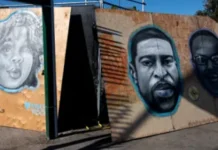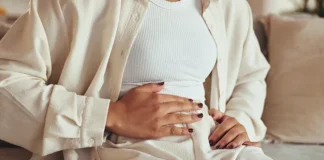
by Denim Fisher
In 2020, as COVID-19 shut down the world, the murders of Breonna Taylor and George Floyd put a painful truth in the spotlight: Black people are never quarantined from racism. Even in a global lockdown, Black communities were forced to confront both a deadly virus and the ongoing trauma of state violence.
That dual reality — public health crises colliding with systemic racism — continues to shape how Black Americans experience healing. And for many, the path forward comes not from institutions, but from each other.
Baltimore resident Aaliyah Nurideen saw this firsthand at one of the Black Emotional and Mental Health Collective’s recent trainings. “Oftentimes, you go to a training and they give you the tools and you think OK, I can use this, but to be able to work through it in real time on how to use what we’re being taught here and what is sbeing reinforced was a valuable tool,” she says.
Her reflection captures the heart of BEAM’s work: centering healing not as an abstract idea, but as a practice rooted in lived experience, community care, and truth-telling.
Building Care When Institutions Step Ba
In August, BEAM hosted a virtual conversation titled “When the System Pulls Back, We Pull Up: The Underground Wellness Network & The Future of Care.” The gathering underscored the need for grassroots organizations to step in as federal cuts slash public health programs, including those once funded to address mental health, substance use prevention, and treatment.
Led by BEAM Executive Director Yolo Akili Robinson, Associate Director of Training and Programs Joelle Dussek, and Director of Training and Programs Natalie Patterson, the conversation highlighted what Black communities have long known: when institutions withdraw, communities themselves must repair, restore, and care.
A Framework for Healing
BEAM grounds its work in healing justice, a framework that calls for confronting generational, individual, and collective trauma caused by systemic violence, oppression, and policing. Healing justice is not just about access to services — it’s about reshaping systems to center, as activist Cara Page puts it, “our psychic, emotional, physical, spiritual, and environmental well-being for our collective liberation.”
Robinson put it bluntly on the “Black Healing Remixed” podcast in 2024: “There are carceral systems that are not invested in care but invested in making money off of Black bodies inside of these institutions. We must challenge these systems to actually be about healing.”
Practicing Collective Self-Care
The call to weave care into the struggle for freedom is not new. In 2018, scholar and activist Dr. Angela Davis explained, “It’s very dangerous not to recognize that as we struggle, we are attempting to presage the world to come. If we don’t start practicing collective self-care now, there’s no way to imagine much less reach a time of freedom.”
BEAM takes that charge seriously. The results of the four-day Black Mental Health & Justice Immersion training Nurideen attended were impressive. 100% of participants said they’d recommend the training, and 99% reported an increase in knowledge of healing justice and peer support.
Confronting Mistrust and Harm
Robinson also recognizes the barriers that prevent many Black people from seeking traditional therapy. “When our folks are like I’m scared of going to therapy, or psychiatry, that’s legitimate. It is based on ongoing and current, and previous harm and violence against our folks,” he says.
That reality calls for advocates who understand both the danger of systems and the necessity of finding care. As Robinson put it: “We have to find the folks who are the advocates, who understand it like, this system is dangerous, but I’ve got to protect you and get you some care.”
Toward Collective Healing and Repair
The work of racial healing demands honesty about harm, acknowledgement of generational trauma, and commitment to collective care. It requires building the conditions for thriving together.
As BEAM’s work shows, healing is inseparable from mental health and from justice. It requires challenging systems that perpetuate harm, while creating networks of care that honor the dignity of every person.
Or as Davis reminded us: “If we don’t start practicing collective self-care now, there’s no way to imagine much less reach a time of freedom.”















